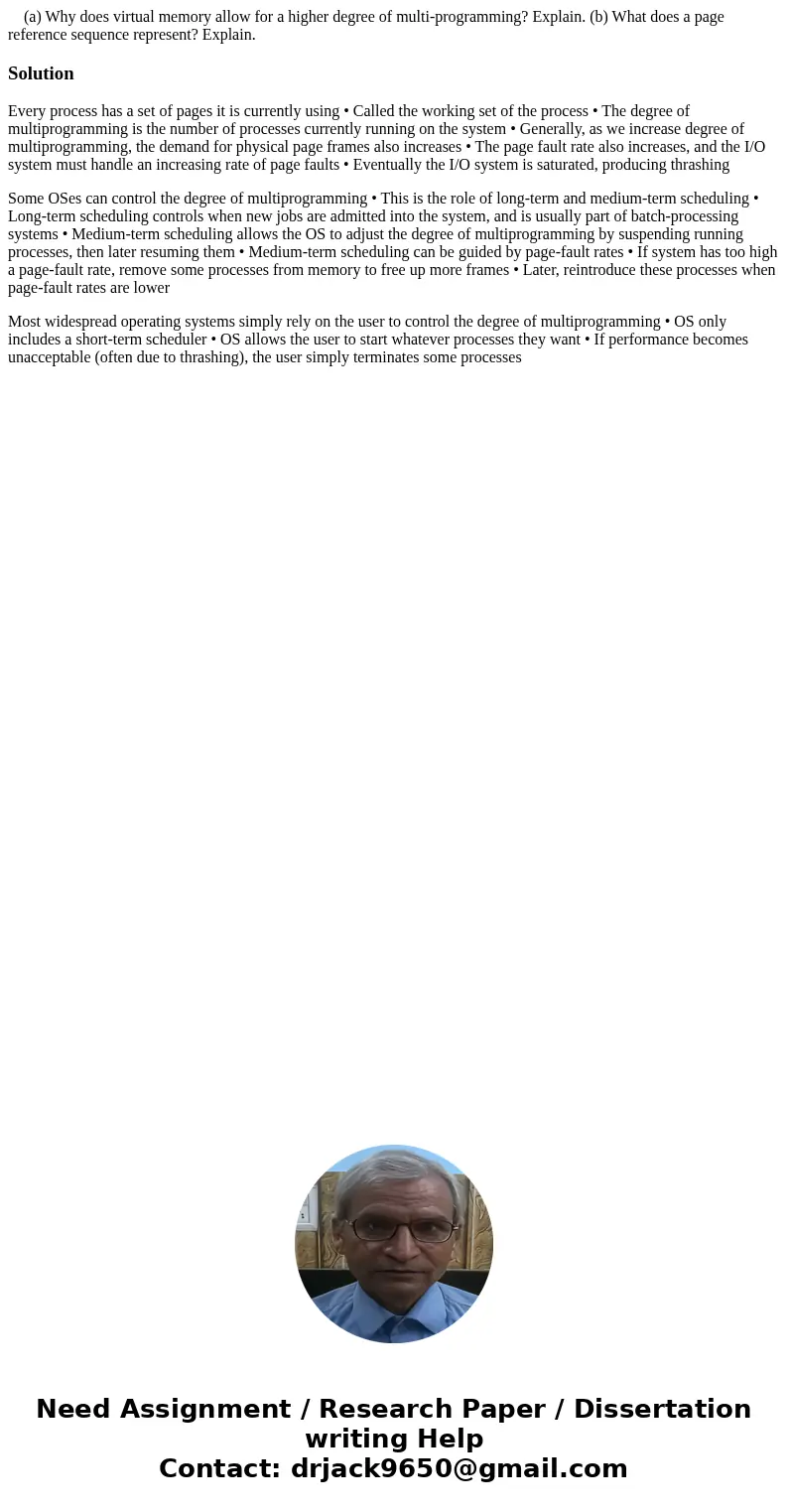a Why does virtual memory allow for a higher degree of multi
(a) Why does virtual memory allow for a higher degree of multi-programming? Explain. (b) What does a page reference sequence represent? Explain.
Solution
Every process has a set of pages it is currently using • Called the working set of the process • The degree of multiprogramming is the number of processes currently running on the system • Generally, as we increase degree of multiprogramming, the demand for physical page frames also increases • The page fault rate also increases, and the I/O system must handle an increasing rate of page faults • Eventually the I/O system is saturated, producing thrashing
Some OSes can control the degree of multiprogramming • This is the role of long-term and medium-term scheduling • Long-term scheduling controls when new jobs are admitted into the system, and is usually part of batch-processing systems • Medium-term scheduling allows the OS to adjust the degree of multiprogramming by suspending running processes, then later resuming them • Medium-term scheduling can be guided by page-fault rates • If system has too high a page-fault rate, remove some processes from memory to free up more frames • Later, reintroduce these processes when page-fault rates are lower
Most widespread operating systems simply rely on the user to control the degree of multiprogramming • OS only includes a short-term scheduler • OS allows the user to start whatever processes they want • If performance becomes unacceptable (often due to thrashing), the user simply terminates some processes

 Homework Sourse
Homework Sourse